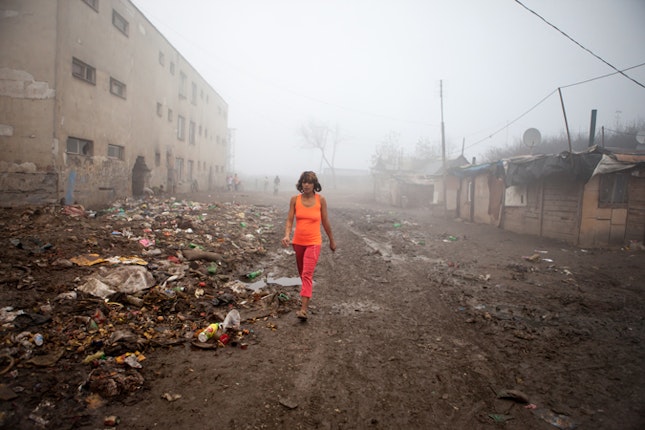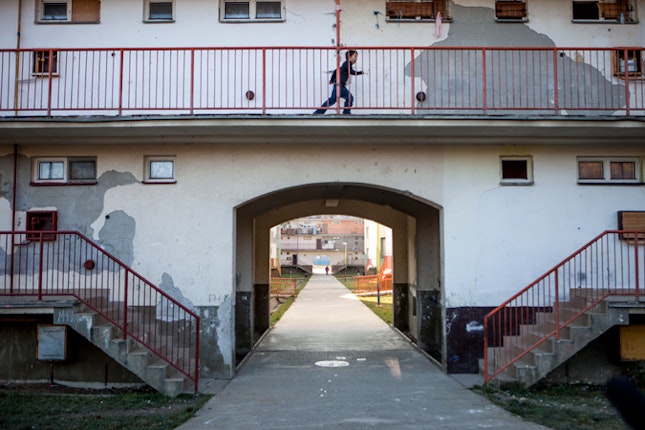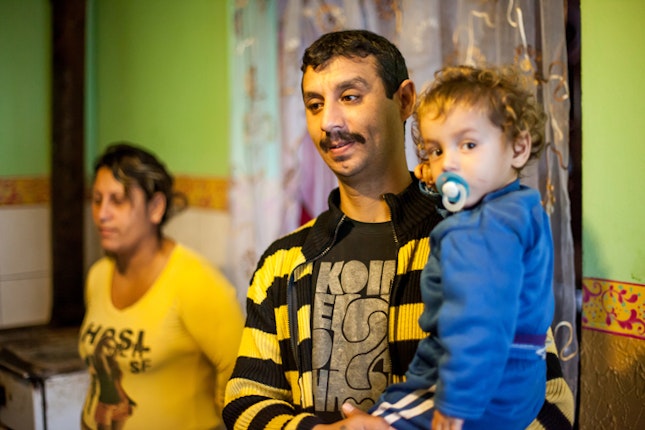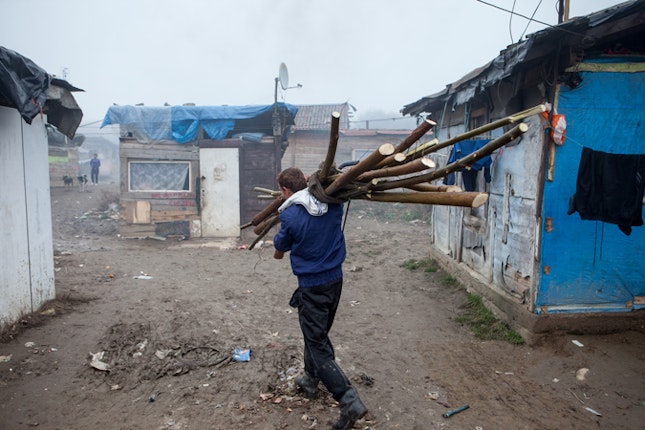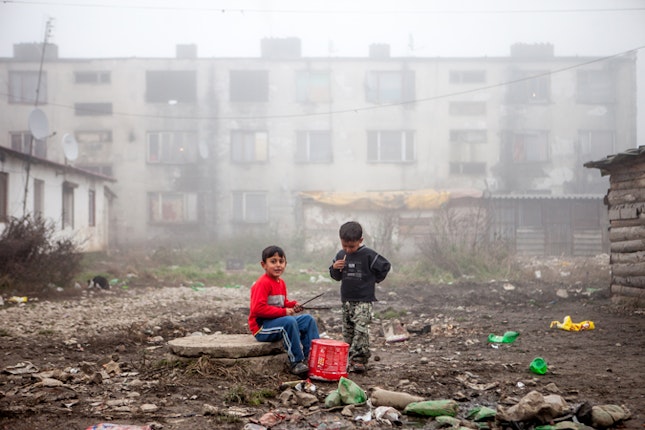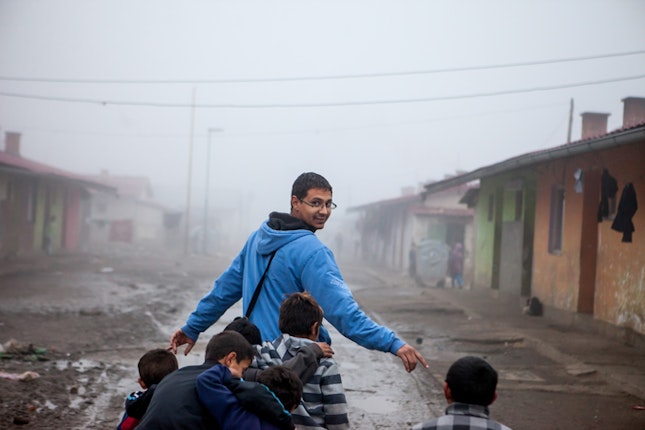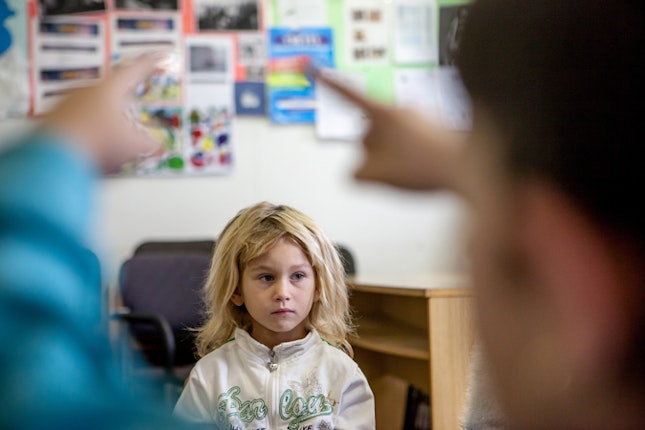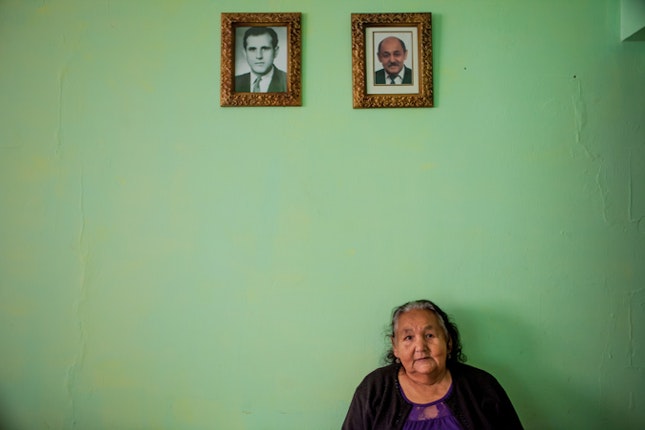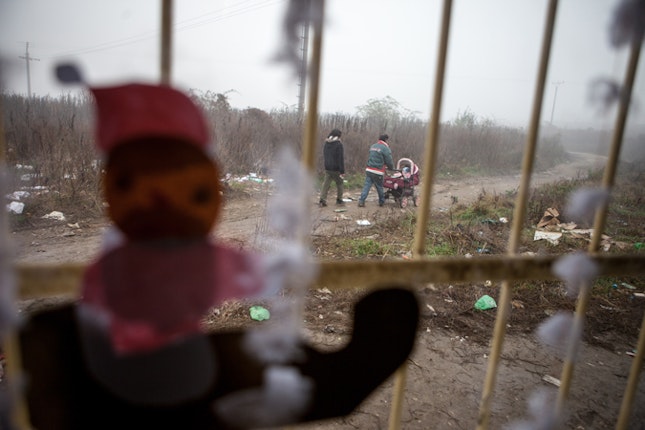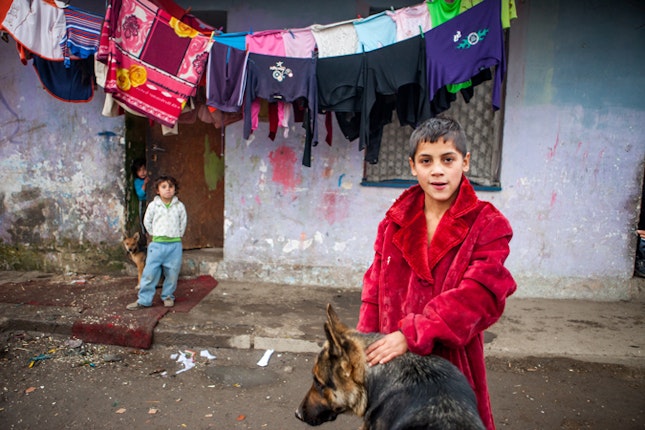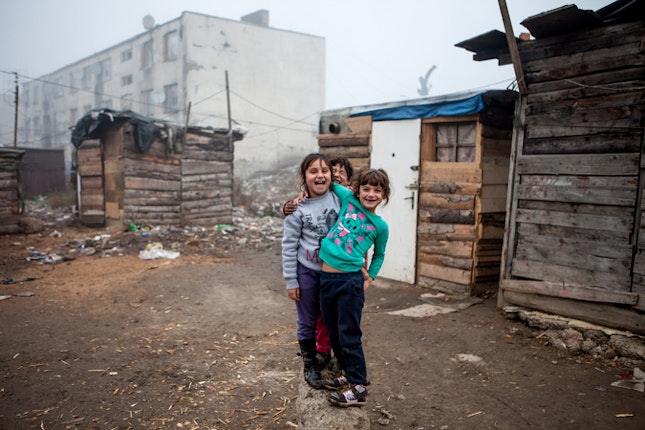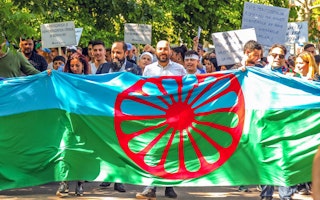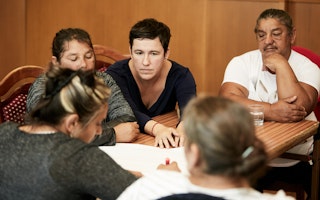Looking Past the Poverty: Life in Roma Ghettos
By Lauren Frohne
How do you make seen what is unseen, or capture a truth the world can’t—or won’t—see from the surface? This has always been the challenge of documentary photography and filmmaking: to dive below the surface and bring these truths to light.
In November of last year, I traveled to Slovakia with documentary photographer Björn Steinz to document two Roma neighborhoods in eastern Slovakia. The Roma are the largest—at around 12 million people—and most disadvantaged ethnic minority in Europe. Throughout the continent they face severe discrimination, are deprived of education and employment and often live in extreme poverty.
This is easily seen if you visit one of the isolated settlements typically situated on the outskirts of otherwise normal cities and towns in Europe. Conditions vary from bad to worse, as running water, electricity, or any kind of infrastructure are often lacking. But we would be remiss to assume that these problems are the only thing that characterizes the Roma.
During our trip, I filmed interviews and video footage with families, while Björn made still images around the communities. Our goal was to capture a sense of daily life in these communities, a glimpse of family dynamics, and the hard work, talent, and hopefulness that keeps these families going day to day under such severe conditions. We wanted to go beyond what was visible from the exterior and provide a more nuanced look of life in these communities.
Below is a conversation I had with Björn about our trip.
What has drawn you to documenting the Roma?
One of my closest friends is Roma. His name is Mario Bihari, and he is a blind musician and part-time activist. Mario is originally from Slovakia, but now lives in Czech Republic. I met him over 15 years ago while studying for my master's at the Prague Art Academy. Mario was the first person to connect me to the Roma community, and shortly after meeting we began working together on different projects.
I travelled with Mario in 2007 to Jarovnice, Slovakia, which was at that time probably the biggest Roma settlement in Eastern Europe. For me, it was my first experience in a marginalized Roma community. My connection with Mario, his family and friends, and the projects we worked on together all inspired my work on Roma communities.
What are some of the most challenging aspects of going into a marginalized community like this and trying to make photographs?
For me the most challenging aspect is getting inside the community I am working with. I need to be there in the mix with the people in order to start my documentary work. In both places where you and I traveled in Slovakia, social and NGO workers helped connect us to those communities. Most of our fixers were Roma themselves, which I think is incredibly important in gaining people’s trust.
Otherwise, I try to be very careful not to offend anybody with my photography. I ask people in the beginning if they are okay with being photographed and explain to them why I want to take pictures and whom I am working for. Of course everybody has the right to refuse and I accept that. Mostly they are fine with that. In my experience, Roma people do not have a problem being photographed, once they've accepted you into their community.
Disadvantaged communities that have faced a lot of discrimination and even brutality can often be skeptical of outsiders, especially those with cameras. How do you feel the people reacted to us being there?
Mostly, I felt people reacted very positively. We were there on behalf of Open Society and a local NGO that are trying to improve the living conditions in the settlements. For me, that is a big difference; we were not there as journalists working for a magazine or newspaper, which probably would have made it more difficult. And of course the children loved us, as we were something new and different from their daily routine.
Our assignment was to go below the surface, looking past the conditions people were living in. As a photographer, how do you approach that? What are you looking for? What is in your mind as you are making photographs and interacting with the people?
I try to show Roma with their pride and dignity as human beings just like I would any other person. The images I take show my subjective view of their reality. I hope the images serve as a document to life in a settlement. For me it is very important to first listen to the people I am going to photograph. To recognize that I am entering a space I do not know.
From there, I try to build some trust with the people. I ask them about their daily lives, their families, and their problems. So much depends on the communication I have with a subject before I even begin to take photographs. Only once I feel that things are headed in a good direction will I start working.
I try to show my respect and interest. If I am looking for daily life situations and portraits, I will ask them for examples and permission to photograph in their homes. Of course, I always have in my mind that I am on an assignment and my job is to visualize what is happening around me. But sometimes I can’t help but get angry and upset or feel helpless when I see children with little chance of escaping their current situation.
What do you hope this work says to people who see it? Especially to people who are unfamiliar with the issues Roma people encounter throughout Europe?
For me it is really important that people are made aware, that people understand that I made these images in Europe. I think most people are shocked to see that these settlements exist, where people live under very difficult, if not inhuman conditions—especially in the winter. I would love if the images could help change people’s perceptions of the Roma and bring more understanding to their situation. If people would understand how important it is to try to improve their education and living conditions by giving people a chance to be independent if they want to.
But I am not sure that all of this will happen. Unfortunately, I know many people who had bad experiences with Roma and are now unwilling to engage in any discussion on the issue. They accept only that the Roma exist.
Did you see or experience anything that surprised you? Or defied stereotypes?
Every time you work in a settlement you will find something new and surprising. In Moldava nad Bodvou I was surprised when we met Nikola Horvathova’s family. Nikola is studying to be a social worker and acted as our guide in the settlement. During our visit we discovered that half of her family is living in the “normal” neighborhood in Moldava nad Bodvou, in a non-Roma surrounding, and the other part in the marginalized settlement.
One part of the family got out of the marginalized community, managed to find work and make a living. Nikola and her siblings are going to university. The other part of the family did not seem to get such a possibility, or did not want to leave the settlement. Observing that, I feel that at least some of the Roma we met were able to break the cycle. I do not know the full history of this family, but it surprised me to see these very different worlds occurring in one family.
What do you think needs to change in order for the lives of Roma to improve?
I think one of the most important things that can be done is to improve the living conditions of Roma in the settlements. Education is equally important for not only children and young people, but also to help educate the older Roma so that they can find ways to make a better living. In my opinion it is really necessary to break the vicious circle of prejudices from both sides.
I had the opportunity to work for Open Society at Barvalipe, the Roma pride summer camp in Budapest last year, where I met young, well-educated Roma from all around Eastern Europe. Almost all of them worked in their home countries for local NGOs in order to help their communities. I hope that the Barvalipe participants will have influence not just in their communities but also for wider change. They are well-connected both to the Roma community and to the world outside of settlements.
The participants I met were proud to be Roma and also aware of the work that needed to be done to fix the problems. For me these people are our greatest hope for a better future. Ultimately, I think that the Roma need to be empowered to help themselves, but that they must be supported in this process.
Learn more about the Open Society Foundations' work on Roma issues.
Until September 2014, Lauren Frohne was a multimedia producer for the Open Society Foundations.
